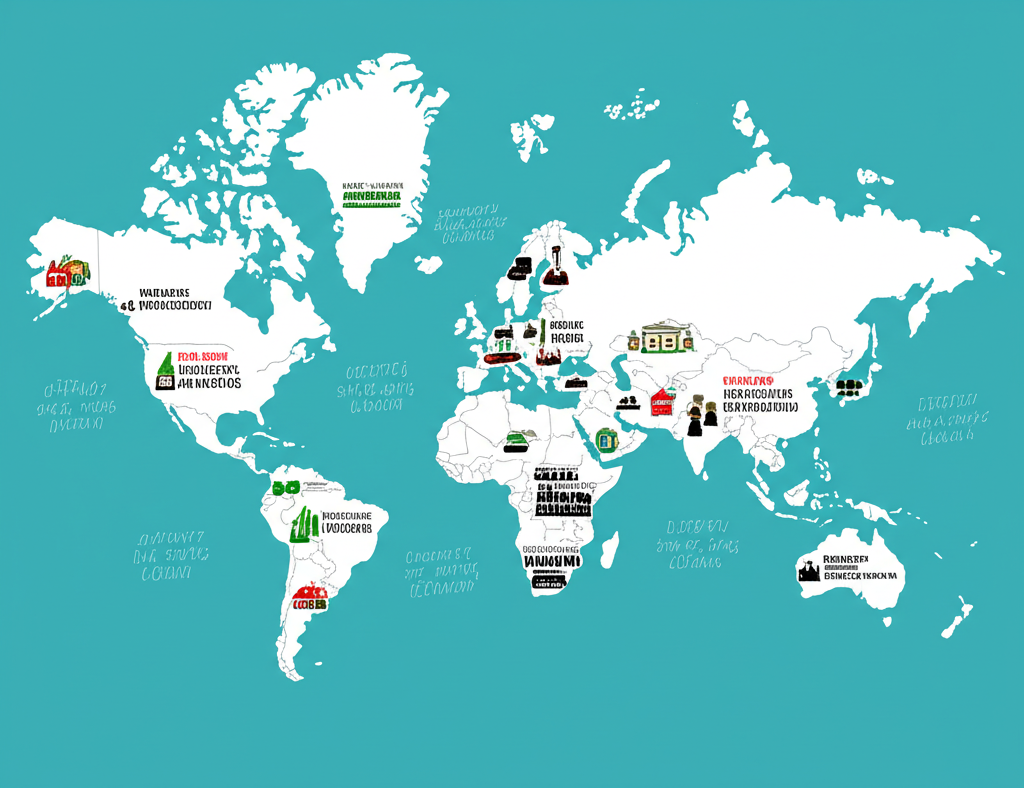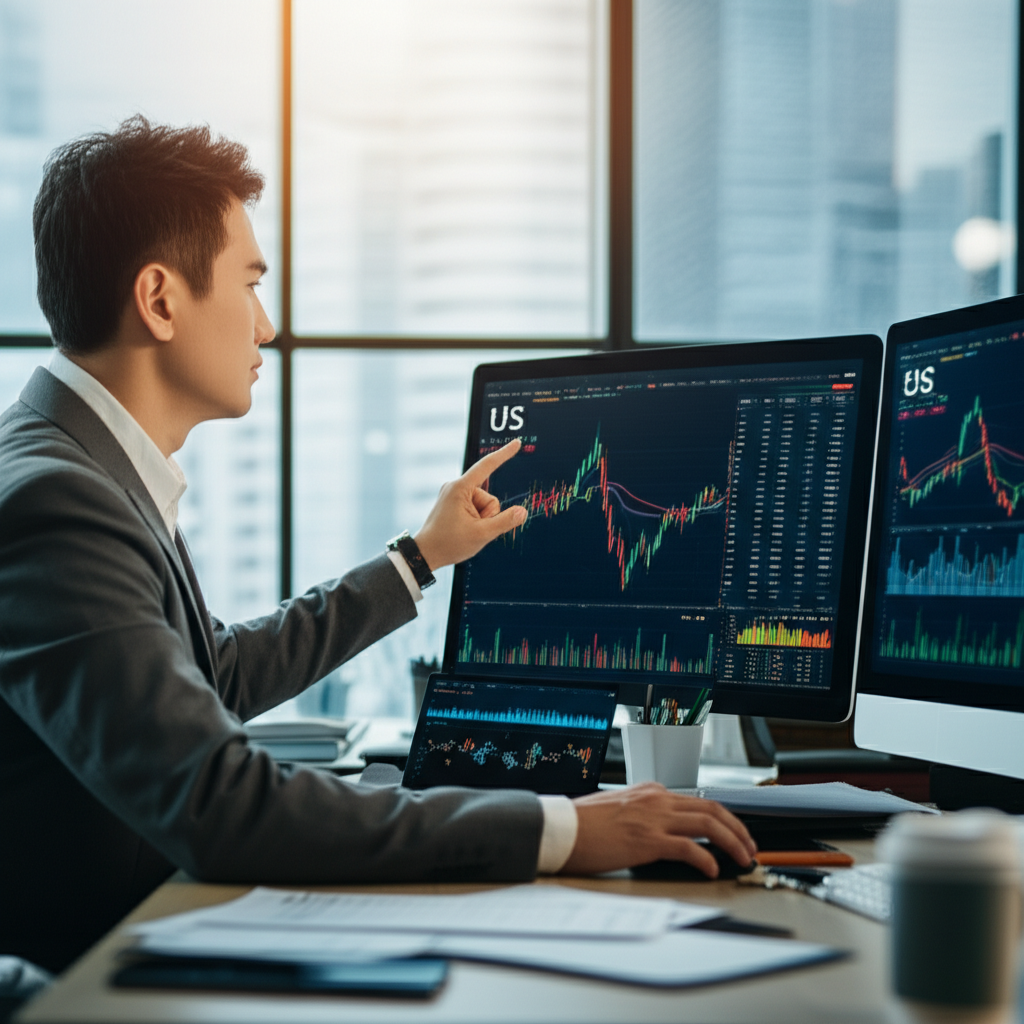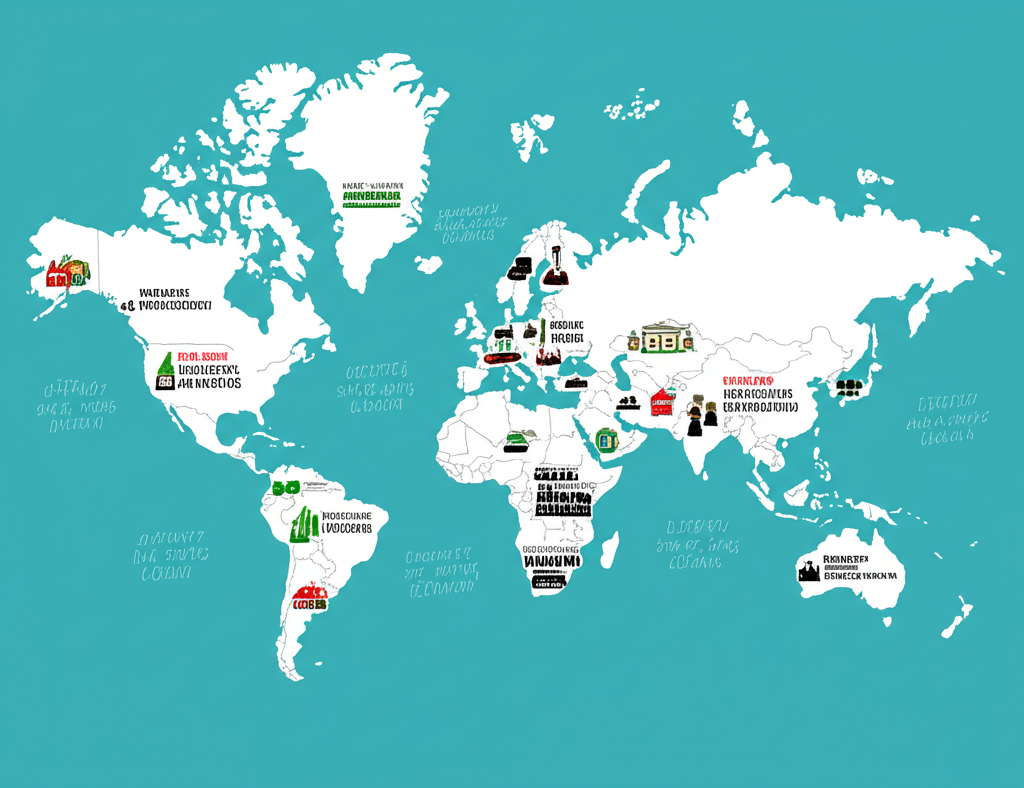The world of investing keeps changing, shaped by forces that cross national lines. For investors in the United States, grasping how globalization ties into investment decisions has never been more essential, particularly with 2025 on the horizon. This guide arms U.S.-based individuals and financial advisors with the insights and practical steps to handle the worldwide economic scene, seize chances for growth, and manage uncertainties in a world that’s more linked together but also prone to divisions.

Globalization boils down to the growing connections among economies, cultures, and people around the globe, fueled by international trade in products and services, tech innovations, and the movement of capital, workers, and ideas. From an investor’s viewpoint, it opens doors to broader possibilities while introducing tangled challenges. Heading into 2025, discussions about globalization are evolving-some point to “deglobalization,” but experts see it as a reconfiguration rather than a full retreat. American investors should tweak their holdings to reflect these changes, from shifting international relations to breakthroughs in technology, keeping strategies tough and aimed at expansion.

Introduction: The Evolving Landscape of Globalization and Investing for United States Citizens in 2025
As borders blur in finance, U.S. investors face a mix of promise and peril. The push toward global ties has accelerated access to markets far beyond American shores, but recent events like supply chain disruptions and trade disputes remind us of vulnerabilities. Looking ahead to 2025, success will hinge on building portfolios that embrace international exposure while guarding against localized shocks. This means staying informed about everything from U.S.-China relations to the rise of digital currencies, ensuring investments align with long-term resilience.
What Exactly Is Globalization in the Context of Investing?
When it comes to finance, globalization shows up as the easy movement of money between countries, the blending of stock exchanges and banks, and the way worldwide happenings sway everyday economies.
Economic Globalization: Picture this as the worldwide exchange of products, services, and funds. A shopper in New York could pick up an iPhone put together in China with chips from Taiwan and design input from California teams. For those investing stateside, this means American firms’ success depends heavily on international suppliers and buyers abroad, turning global trends into direct influences on returns.
Financial Globalization: Here, it’s all about linking money markets and players across the planet. This lets U.S. folks snap up stock in a British tech firm, pour money into an ETF mirroring Latin American growth, or bet on currency swings. Such ties speed up how cash gets used efficiently, yet they also spread trouble fast-a banking hiccup in Europe could jolt Main Street investments overnight.
Together, these elements demand that investors think big, shedding old habits of focusing only on homegrown options to make smarter, worldwide choices.
Historical Impact: How Globalization Has Shaped US Investments
Over the years, globalization has remade the investment scene in America, mostly boosting it along the way. After the Cold War wrapped up, ties between nations tightened dramatically, sparking changes that benefited U.S. portfolios:
Increased Capital Flows: With fewer hurdles to moving funds internationally, U.S. businesses expanded overseas, while overseas players poured cash into American ventures, sparking jobs, fresh ideas, and overall prosperity.
Market Integration: Stock markets started moving more in sync. A factory slowdown in Japan or a policy tweak in the EU could sway U.S. indices the next day, opening doors for smart trades but also heightening the chance of widespread fallout.
Rise of Emerging Markets: Doors swung open to fast-developing spots like China, India, and Brazil, where U.S. money could chase bigger rewards and spread out holdings away from familiar turf.
Enhanced Diversification Opportunities: No longer stuck with just U.S. stocks or Treasuries, investors could mix in global assets that don’t always follow Wall Street’s lead. For example, a surge in Australian mining could balance out a U.S. recession, leading to steadier gains over time.
Historical Benefits for US Portfolios: Time and again, blending in foreign picks has cushioned U.S. investments against bumps, tapping into varied business cycles and innovation hotspots worldwide. Studies from the past few decades show this approach often delivers better-balanced performance.
The Shifting Tides: Is Globalization in Decline, and What Does it Mean for 2025?
Talk of “deglobalization” is everywhere, but terms like “slowbalization” or “reglobalization” capture the reality better. Full disconnection isn’t in the cards; instead, the focus is evolving toward sturdier setups.
“Deglobalization” vs. “Slowbalization”: Economists argue it’s more about slowing the pace than hitting reverse, with efficiency giving way to toughness. Think supply lines getting regionalized, nations bolstering homegrown output for security’s sake.
Factors Driving the Shift:
- Geopolitical Tensions: Wars, tariffs (like those in the U.S.-China standoff), and nationalist waves are making countries rethink reliance on outsiders, especially for essentials like semiconductors or rare earths.
- Supply Chain Resilience: The pandemic laid bare weaknesses in stretched-out global networks, pushing firms to spread out vendors and bring some manufacturing back home or nearby.
- Trade Protectionism: More duties, rules, and government plans shield local jobs and industries from foreign competition.
- Technological Disruption: Tech kickstarted the global boom, but now robotics and AI might keep production closer to home by cutting the need for cheap overseas labor.
Projected Scenario for US Investors in 2025: Come 2025, U.S. investors can expect more emphasis on partnerships by region, like North America or the Indo-Pacific. Spotting wins will mean digging into alliances and chain toughness. Broad global spreading stays vital, but zeroing in on per-country factors-shaped by these changes-will make or break outcomes. For instance, bets on resilient European green tech could pay off amid energy shifts.
Key Opportunities for United States Investors in a Globalized World
Even with changes afoot, interconnected markets keep delivering real upsides for sharp-eyed American investors.
Diversification Beyond US Borders
Sticking only to U.S. assets risks overexposure and skipped chances. Going abroad lets portfolios tap into rhythms that don’t mirror domestic ups and downs, cutting overall swings. By mixing in holdings from varied economies and governments, investors build buffers against U.S.-specific slumps, like pairing tech-heavy S&P 500 with steady European industrials.
Tapping into Growth Markets
Outside America, spots in emerging economies often post stronger GDP numbers and swelling middle classes. Channeling funds there-via direct buys or pooled options-hooks U.S. investors into these vibrant scenes for outsized gains down the line. Pinpointing hot areas, such as solar projects in India or e-commerce in Africa, can supercharge results, especially as global demand for sustainable solutions rises.
Currency Opportunities
Exchange markets pack both pitfalls and payoffs for Americans. Smart plays in strengthening foreign monies or assets priced in them can boost yields. A mighty dollar, meanwhile, cheapens overseas buys but might trim repatriated profits. Keeping tabs on central bank moves, like the Fed versus the ECB, helps time these swings effectively-for example, a weakening euro could make German autos a bargain.
Innovation and Technology Transfer
Breakthroughs happen everywhere, not just Silicon Valley. International stakes give access to top innovators, from Swiss pharmaceuticals to Korean batteries. This spreads U.S. exposure to worldwide pacesetters, letting investors ride industry waves no matter where they start. In biotech, for instance, a U.K. gene therapy firm could complement domestic drug giants.
Navigating the Risks: Challenges for US Global Investors in 2025
Global plays hold huge appeal, but they bring hurdles that demand careful handling from U.S. investors.
Geopolitical and Regulatory Risks
Venturing abroad means dealing with diverse political climates and rules. Tensions, policy flips, or asset seizures can tank values swiftly. Plus, governance varies-some places lag in shareholder rights or disclosure. Weighing a nation’s stability alongside its growth prospects is crucial; Brazil’s commodity boom, say, might falter if elections turn volatile.
Currency Fluctuations
Dollar strength or weakness alters foreign returns big time. A solid local performer in yen could lose luster back in USD if the yen dips. This layer can wipe out wins or worsen hits, so monitoring trends like inflation gaps between countries becomes a must.
Market Volatility and Information Asymmetry
Overseas exchanges, especially in developing areas, swing harder and trade thinner than NYSE floors. Selling big positions might move prices against you. On top of that, reporting standards can be spotty, complicating background checks-unlike the SEC’s mandates, some filings arrive late or vaguely.
US Tax Implications for Foreign Investments
Taxes add a maze for Americans abroad. The IRS demands full disclosure on overseas earnings and holdings.
- FATCA (Foreign Account Tax Compliance Act): Forces banks worldwide to flag U.S. account details.
- PFIC (Passive Foreign Investment Company) Rules: Hit certain foreign funds with steep taxes if they don’t qualify for breaks.
- Foreign Tax Credits: Offset Uncle Sam’s bite with credits for abroad levies, but paperwork is intricate.
- Reporting Requirements: File forms like Form 8938 for foreign assets or FBAR for bank accounts; skip it, and fines pile up. Teaming with an international tax whiz is smart. Check IRS details at international tax topics.
Essential Investment Strategies for United States Citizens in 2025
To make the most of worldwide markets, U.S. investors should craft plans that weigh rewards against pitfalls.
Asset Allocation with a Global Lens
True spreading means looking everywhere-not just stocks versus bonds, but nations too. Fold in developed-market equities from Japan, emerging debt from Vietnam, or worldwide property funds. Tailor shares to your comfort with risk, timeline, and aims; a retiree might lean 20% international for balance.
Utilizing ETFs and Mutual Funds
These tools make global entry straightforward and cheap for most Americans.
- ETFs: Quick to trade and clear, they mirror benchmarks like MSCI World ex-U.S. or sector plays in clean energy.
- Mutual Funds: Pros pick winners actively, though fees run higher than passive options.
They manage borders, swaps, and some paperwork, but you still handle your taxes.
Direct International Investing
Advanced players might grab individual overseas shares or notes. It gives pinpoint control and upside from standouts like a Swedish EV maker, but demands deep dives, grasp of local rules, and extra costs. Use U.S. brokers with global reach or ADRs listed here at home.
Hedging Strategies
Counter currency wobbles with tools like forwards or options to fix rates. It shields downside but costs extra and caps upsides. Look for hedged ETF versions if direct hedging feels daunting.
Due Diligence and Research
Scrutinize everything: firm balance sheets, country forecasts, politics, and local customs. Lean on trusted outlets, IMF outlooks at International Monetary Fund, and filings to build solid cases.
Choosing the Right Broker for Global Investing: A 2025 Perspective for US Residents
Picking a broker shapes how smoothly U.S. investors reach international assets, affecting ease, expenses, and options.
What to Look for in an International Broker
For Americans, prioritize firms compliant with home rules while opening wide doors abroad.
- Regulatory Compliance: Check SEC and FINRA stamps for U.S. ops, plus solid overseas oversight.
- Asset Breadth: Confirm coverage of your targets, from Tokyo stocks to euro bonds.
- Platforms and Tools: Seek user-friendly interfaces, charts, insights, and app support.
- Fees and Commissions: Weigh trade costs, FX markups, and upkeep charges.
- Customer Support: Need quick, expert help on cross-border issues.
Top International Brokers for Global Market Access (2025)
U.S. folks eyeing worldwide plays have solid picks:
1. Moneta Markets: Popular among non-U.S. traders for tight spreads and affordable trades in forex, index CFDs, commodities, and cryptos. It runs on pro platforms like MT4, MT5, and cTrader, ideal for hands-on types wanting variety. Holding an FCA license, it serves a worldwide crowd with language options and reliable service.
- Note for US Investors: Due to NFA and CFTC rules, Moneta Markets skips U.S. retail forex/CFD clients. Americans chasing global forex or similar should turn to regulated U.S.-friendly options.
2. OANDA: A top U.S.-approved forex specialist, giving direct entry to many pairs. It shines with fair pricing, sturdy software, in-depth charts, and learning aids-great for beginners to pros dipping into currencies.
3. IG: Regulated globally with U.S. footing, it delivers forex and compliant extras to Americans. Expect vast (where allowed) markets, sharp tools, and education. Its dependable setup, deep liquidity, and track record suit those building international stakes safely.
US Regulatory Considerations for Global Brokerage
Even abroad, U.S. rules govern American trades.
- FINRA (Financial Industry Regulatory Authority): Watches over U.S. brokers.
- SEC (Securities and Exchange Commission): Safeguards fairness and growth.
- NFA (National Futures Association) and CFTC (Commodity Futures Trading Commission): Handle derivatives like forex.
These limit what offshore firms can offer Americans-no CFDs often-so always confirm status.
The Role of Technology in Facilitating Global Investing
Tech keeps breaking down walls, making worldwide deals easier for U.S. folks.
- Fintech Innovations: Apps and online setups let anyone sign up and trade globally from a phone, slashing old barriers.
- Robo-Advisors: These auto-build and tweak international mixes via ETFs, matching your risk level without hassle.
- Fractional Shares: Buy slivers of pricey foreign names, opening doors for modest savers.
- Improved Data Access: Real-time global feeds and analytics sharpen research, spotting trends early.
- Blockchain’s Potential: Emerging now, it could speed settlements, cut fees, and secure cross-border assets via tokens.
Conclusion: Charting Your Course in a Globalized Investment World (2025)
In 2025, American investors confront a lively, multifaceted global arena. Classic globalization drivers still promise spreading and expansion, but fresh tensions and resilience priorities are altering flows. Thriving calls for proactive outlooks, ongoing education, and flexible tactics.
Grasping globalization’s twists, facing risks head-on (taxes included), and using researched, varied approaches lets U.S. investors steer steadily. The best brokers and tech tools will unlock more, fortifying portfolios against global twists.
How does globalization affect my investment portfolio in the US?
What are the best strategies for investing globally from the United States in 2025?
- Global Asset Allocation: Spread across foreign equities, debt, and extras.
- ETFs and Mutual Funds: Easy, low-cost entry to worldwide indexes.
- Due Diligence: Vet economies, risks, and firms deeply.
- Risk Management: Hedge currencies and mind U.S. rules/taxes.
Customize to fit your profile for balance.
What are the main risks of international investing for US citizens?
- Geopolitical and Regulatory Risks: Wars, tariffs, and rule differences hit hard.
- Currency Fluctuations: Rate changes cut USD-converted gains.
- Market Volatility: Overseas spots swing more, with thinner trades.
- US Tax Implications: IRS hurdles like FATCA, PFICs, and filings demand attention.
Prep thoroughly to handle them.
How has technology impacted global investing trends for United States investors?
- Lowering Barriers: Fintech and bots open doors wide.
- Improving Access: Fractions and slick platforms boost involvement.
- Enhancing Information: Global data flows aid sharp choices.
- Simplifying Management: Autos handle diverse mixes effortlessly.
It’s sped up and spread out international plays.
Which international brokers offer the best platforms for global market access, and is Moneta Markets suitable for US investors?
Given the limitations for US investors, what are Moneta Markets’ key advantages for non-US global traders?
- Competitive Spreads & Low Costs: Tight pricing across products draws volume players.
- Advanced Trading Platforms: MT4, MT5, and cTrader deliver robust, flexible setups.
- Broad Market Access: Forex to crypto CFDs enable wide spreading.
- Strong Global Presence & Support: FCA-licensed with multilingual help for worldwide users.
It equips non-U.S. folks with pro-grade global tools.



No responses yet